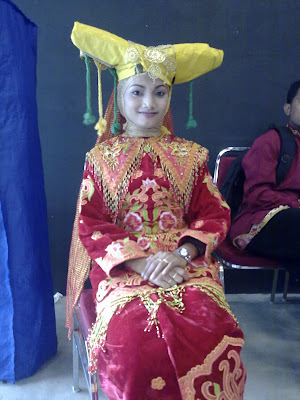This Rumah Gadang has a very unique architecture, and is different from any other traditional architecture. The roof, especially, distincts it from other houses. The end of the roof are pointed upwards, resembling the shape of a cow's horn which is called the gonjong. Often in any rumah gadang, there would be a place to chill and relax outside the house. This place, though it is considered outside, is still connected to the house and it is called the "anjuang" or anjung, literally means balcony.
The walls of the houses, or "dindiang" are often decorated in woods carving and sometimes verses from the Holy Quran are carve into the walls. The woods carving are usually inspired from human beings' behaviors, plants, animal or any nature around us. This rumah gadang is also famous because of its architecture that does not use any nails to connect the woods; they used a very strong glue made out from tree latex, instead. One of the most famous type of rumah gadang is the Istana Seri Menanti.
*Istana Seri Menanti: Famous of its building that does not used any nails*
*anjuang*
*the roof, or gonjong*
*the walls, or dindiang*
*one of the most amazing wood carving I've ever seen*
*the wall with the Holy Quran verses carve on it*
*an example of rumah gadang: Muzium Negeri, Seremban*


















